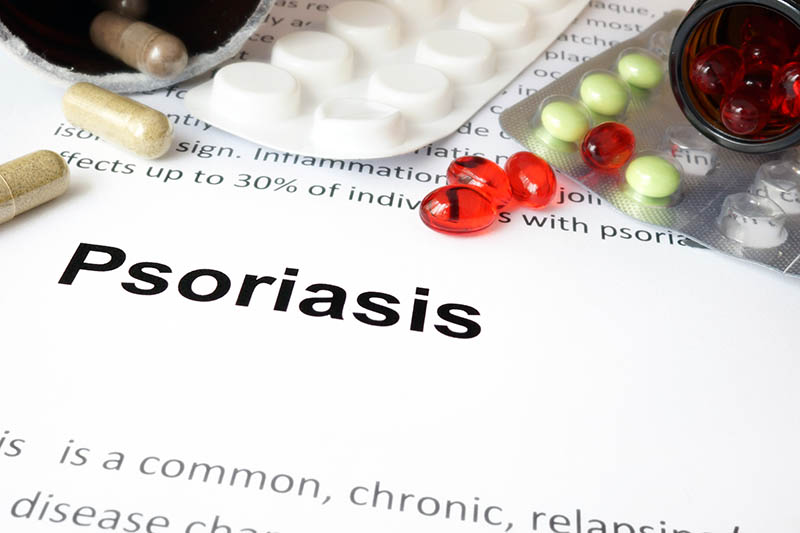Psoriasis is a relatively common, yet bothersome and sometimes painful disorder that affects more than seven million Americans and roughly 125 million people throughout the world. Fortunately, there are several treatments for this ailment. The following brief article will highlight variations of the condition, as well as identify potential therapeutic options.
What Is Psoriasis?
Psoriasis is thought to be an immune system disorder that stimulates the life of skin cells. Impacted skin cells collect on the skin’s surface which precipitates several untoward. potentially painful physical symptoms like inflammation, scaling and intense itching. There are, however, different forms of psoriasis that manifest in different bodily regions and might cause varying symptoms including:

Plaque Psoriasis
This form of the malady is the most common and often appears on the knees, elbows, back and scalp.
Inverse Psoriasis
The inverse strain of the disease often shows up under the armpits, in the folds of the genital regions, around the groin and beneath the breasts and is typically precipitated by sweating and rubbing skin.
Guttate Psoriasis
One of the illness’s less common types, the Guttate strain often attacks the skin on the upper arms, things and scalp. In addition, this form often begins in young people and is triggered by emotional stress, a respiratory illness or certain medications.
Pustular Psoriasis
In most instances, the skin of one particular bodily region (such as the hands or feet) become covered with pus-filled bumps that can be triggered by a host of environmental and biological causes.
Nail Psoriasis
Those afflicted with this variation of the disorder experience symptoms like brittle, sometimes painful nails that might also change color.
Psoriatic Arthritis
Some people who battle psoriasis for extended durations are eventually stricken with psoriatic arthritis, which means they also experience swollen, painful joints in addition to associated skin manifestations.
Erythrodermic Psoriasis
This strain is the least common but potentially the most serious, can cause severe skin damage and be a harbinger of more serious illnesses like heart failure and pneumonia.
Treatments for Psoriasis
There are no uniform treatments for any variation of the illness. What works for one impacted person might not be successful for another. Typically, therapeutic protocols will depend upon several different factors including the specific type of the disease diagnosed and its severity, the patient’s age and overall health. That said, several treatment options could be possible such as:
Topical Preparations
These ointments and skin lotions can be sold over-the-counter or be available through a doctor’s prescription and are geared towards soothing inflamed skin and easing the associated itching.
Biologics
These are various drugs typically administered through an injection and are created with designs on correcting immune system abnormalities that cause the rapid production of skin cells.
Systemic Medications
These treatments are typically administered in pill form and are geared towards alleviating or eliminating psoriasis symptoms.
Light Therapy
This therapeutic protocol, medically referred to as phototherapy involves exposing psoriatic skin to forms of light such as ultraviolet.
Alternative Treatments
Certain psoriasis patients have found a modicum of success by employing alternative treatments like adopting a healthier diet, bathing in products like Epsom salts and oatmeal, exposing impacted skin to limited amounts of direct sunlight, increasing the amount of exercise they receive or undergoing ancient healing practices such as acupuncture.